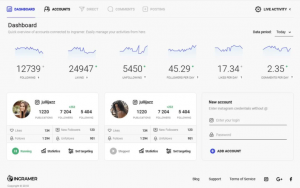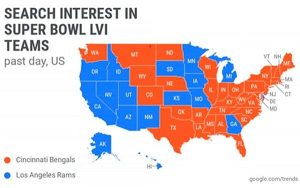September 2, 2016
“How often should I email my subscribers?”
It’s an important question, especially if you worry that you’re emailing too often or wondering whether your subscribers would tolerate more emails. But maybe that’s not the best way to get the right answer. Try this:
Should different customer groups get different frequencies?
Now, there’s a question we can answer: Yes!
The email frequency question assumes that you rely on broadcast email – sending the same email to everybody at the same time. It also means you assume all of your recipients are exactly the same: the same interests, engagement level, etc.
All customers are not the same, of course. Some will want to read and act on everything you send. Others get your emails only because they had to in order to buy, join, attend or otherwise participate in your business. Some care about only one of your product lines. Others want to know everything.
We’ll attack this issue from an ecommerce perspective because that’s where the email frequency questions come up most often, but the suggestions can apply in many other email situations, too.
Different frequencies for different segments
Here’s where you can put your customer information to work. Segment your customer database according to one of the elements in the RFM model:
- Recency: Look for subscribers who have recent activity associated with their email addresses. The easiest way is to look for recent opens and clicks because you don’t have to integrate any other business systems with your email software.
- If you can integrate your CRM or ecommerce activities, look for customers with recent purchases, recent account activations or content downloads.
- The time period depends on your business cycle – maybe up to a year if you sell products that take a lot of research and consideration, less if your customers buy frequently.
- If you can integrate your CRM or ecommerce activities, look for customers with recent purchases, recent account activations or content downloads.
- Frequency: Create a segment of customers who act most often in a set time period. Again, the action you’re looking for and the time period will depend on what makes the most sense for your company.
- Monetary: This time, you’ll segment out customers who spend a certain amount of money on your products, including both your most valuable customers along with those who buy infrequently but enough to deserve some consideration.
Now that you have a segment of customers who are more engaged with your company, brand or email, you can test different frequencies. If you email your entire list once a week, test a twice-weekly schedule on your segment.
Audit before changing email frequency
If broadcast email remains the backbone of your email program, changing frequency could bring you great rewards but also cost you subscribers and lost revenue. Don’t make a move until you answer these five questions:
- What do I want my email program to achieve? Everything you do should align with your goals.
- What is our customer buying cycle? Generally, the longer the considering/buying cycle, the longer the email interval.
- What other kinds of content can I offer my customers? Sending more messages lets you send informational/education content instead of just more “Buy this now” messages.
- How much is an email relationship worth? Increasing email frequency can cost subscribers. Will the potential extra revenue offset churn and acquisition costs?
- What do my competitors do? Don’t be a copycat, but see how others manage email frequency.
Other ways to manage different frequencies
Segmenting allows you to set the frequency on your end. You also can ask your customers what they want, but they might go with the fewest possible contacts.
If segmenting isn’t one of the capabilities you can manage right now, here are two alternatives:
1. Offer a digest version of your most recent emails.
Try this if you send daily emails but want to see whether your customers would be more likely to act on a single email every week. A content-management system that builds this email automatically can save you time over manually creating it.
2. Create sister publications that zero in on specific interests or actions.
Some customers want to see what you have on offer every day. Others are more interested in specific products or topics. Offer these options at opt-in, or promote them in your regular newsletters, transactional emails and other places where you come in contact with your subscribers.
Your next steps: test and measure
Whatever you decide to do, be sure you try out your theories on segments of your database. Watch your metrics closely, looking for changes in unsubscribes, spam complaints, opens, clicks and conversions.
For more how-to steps in managing frequency, see this post on the FreshAddress blog.
Want to send the right email message to the right contact at the right time? Our eSpend Score® email scoring solution was built to help you do just that!
Digital & Social Articles on Business 2 Community(42)








